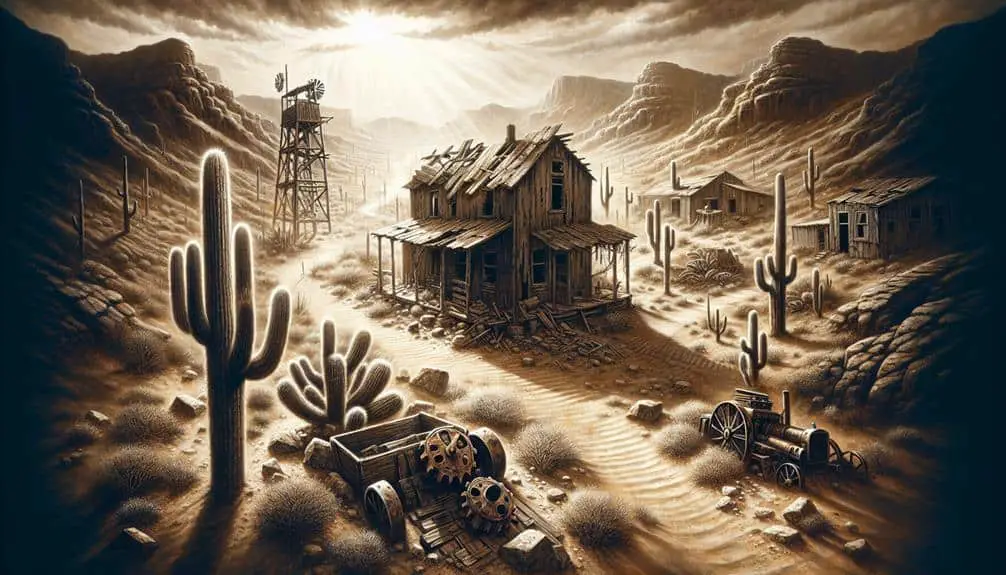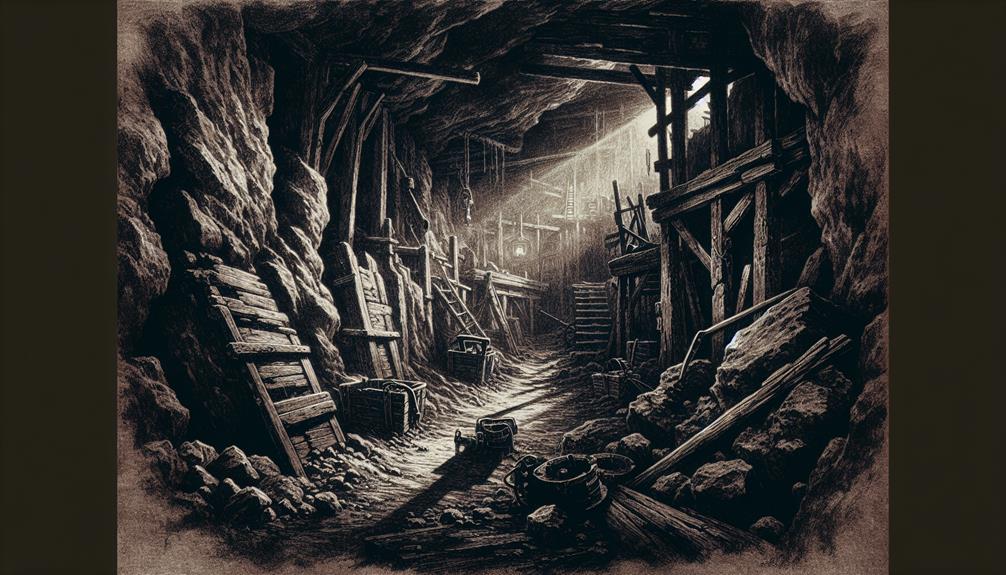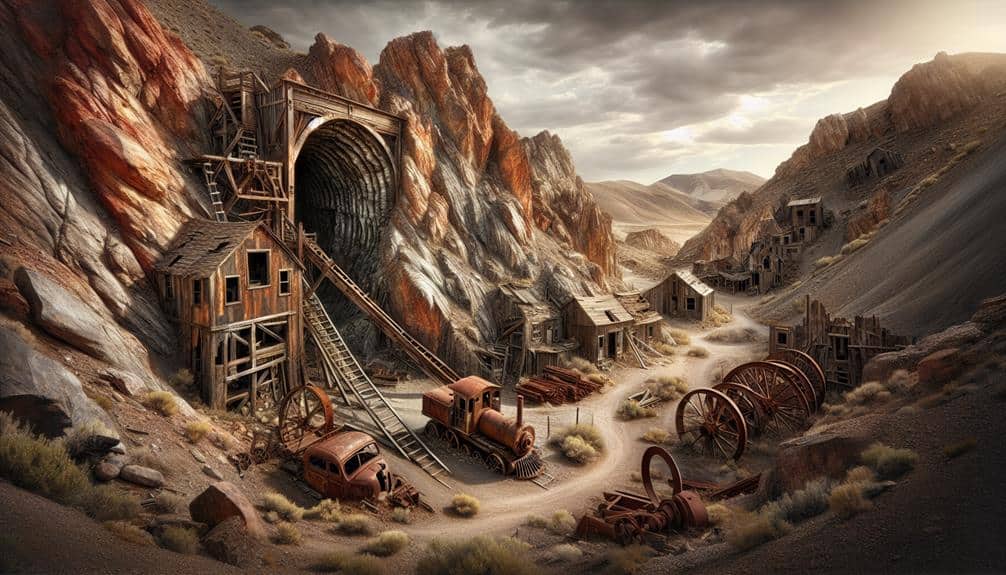Begin a journey through Nevada's forgotten mining communities with essential tips. Consult historical records for insights. Listen to local stories for clues. Explore hidden treasures for mysteries. Uncover origins and daily lives of these communities. Strategically plan your route, map efficiently, and prioritize historically significant spots. Take safety precautions, wear appropriate gear, and stay alert. Capture history visually through photography, preserving the essence of these towns. Connect with local historians, tap into detailed info, attend events, conduct interviews, and gain deeper insights. Essential tips await to enrich your exploration further.
Key Points
- Plan routes strategically to cover significant communities efficiently.
- Prioritize safety precautions in abandoned sites to avoid hazards.
- Capture history through photography to visually preserve the essence of mining towns.
- Connect with local historians for deeper insights and collaboration on research.
- Delve into local stories and hidden treasures for a richer exploration experience.
Researching Nevada Ghost Towns
When researching Nevada ghost towns, start by consulting reliable historical records and archives for a thorough understanding of their origins and development. Delving into local stories can provide valuable insights into the communities that once thrived in these now-abandoned places. These tales often contain nuggets of information about the daily lives, struggles, and triumphs of the people who called these ghost towns home.
In addition to historical records, seeking out hidden treasures can add an exciting dimension to your exploration. Many ghost towns are rumored to hold secrets waiting to be discovered by intrepid adventurers. Whether it's rumored lost mines, buried artifacts, or forgotten riches, these hidden treasures can add an element of mystery and excitement to your journey.
Planning Your Route Wisely
To guarantee a successful exploration of Nevada mining communities, strategic planning of your route is essential for maximizing your time and experience. Mapping routes efficiently before starting on your adventure will guarantee you cover the most significant historic landmarks and hidden gems. Start by researching the locations you intend to visit and create a detailed itinerary that outlines the best route to take. Consider factors such as distance between sites, road conditions, and points of interest along the way. Utilizing GPS or mapping apps can be beneficial in finding your way in unfamiliar territory and avoiding getting lost.
When mapping out your route, prioritize visiting the most historically significant mining communities first to make the most of your time. Identify key landmarks within each community, such as old mines, abandoned buildings, or remnants of the town's infrastructure. By planning your route strategically, you can optimize your exploration of Nevada's rich mining history and immerse yourself in the stories of these forgotten communities.
Safety Precautions in Abandoned Sites
Protect your safety when exploring Nevada's mining communities by taking necessary precautions in abandoned sites. Exploring hazards in these areas can pose significant risks if you aren't careful. Before venturing into any abandoned sites, it's important to stay alert and aware of your surroundings at all times. Keep an eye out for unstable structures, hidden shafts, or loose debris that could potentially cause harm.
To guarantee your safety, always wear appropriate gear such as sturdy boots, a hard hat, and gloves. It's also advisable to carry a flashlight, first aid kit, and extra water in case of emergencies. When moving through abandoned buildings, watch your step and avoid areas that appear unsafe or structurally unsound.
Remember to inform someone of your planned route and estimated return time when exploring abandoned sites. By following these safety precautions and staying alert to potential hazards, you can enjoy your exploration of Nevada's mining communities while minimizing risks to yourself.
Capturing History Through Photography
Exploring the rich history of Nevada's mining communities through photography can provide invaluable insights into the past. Historical preservation is at the core of capturing these communities visually. By documenting the remnants of old mines, dilapidated structures, and the overall atmosphere of these once-vibrant areas, you play an essential role in preserving a piece of history that might otherwise be lost to time.
Photography also serves as a means of artistic inspiration. The rugged landscapes, weathered buildings, and abandoned machinery offer a unique backdrop for creative expression. Through your lens, you can capture the essence of these mining towns, conveying the hardships and resilience of the people who once inhabited them. The interplay of light and shadow, textures, and colors in these settings can evoke powerful emotions and narratives.
Connecting With Local Historians
How can you effectively engage with local historians to gain deeper insights into the history of Nevada's mining communities? Local historians are invaluable resources when it comes to uncovering the rich past of these mining towns. By connecting with them, you can access a wealth of knowledge that may not be readily available through other means.
- Visit Local Archives: Local historians often maintain archives with documents, photographs, and maps that can provide detailed information about the mining communities' history.
- Attend Historical Society Events: Engaging with local historians at events hosted by historical societies can offer opportunities to learn about the mining communities from knowledgeable individuals.
- Conduct Interviews for Oral Histories: Local historians may have conducted or possess oral histories of individuals linked to the mining communities, providing firsthand accounts of life in these towns.
- Collaborate on Research Projects: Working together on research projects can deepen your understanding of Nevada's mining history and foster a collaborative relationship with local historians.
Frequently Asked Questions
Are There Any Specific Rules or Regulations in Place for Exploring Abandoned Mining Sites in Nevada?
When exploring abandoned mines in Nevada, remember to follow safety precautions. Be aware of potential hazards and respect historical significance and cultural impact. Take photos responsibly, support preservation efforts, and document history during remote exploration.
How Can I Ensure I Am Respecting the History and Preserving the Integrity of These Sites While Exploring Them?
To guarantee you're respecting history and preserving integrity while exploring, engage in ethical exploration practices. Document your findings responsibly to contribute to community documentation. By doing so, you can enjoy the experience while honoring the past.
Are There Any Hidden Dangers or Hazards to Be Aware of When Visiting These Remote Mining Communities?
When exploring remote mining communities, hidden dangers may lurk. Stay alert for unstable structures, wildlife, and hazardous materials. Take safety precautions, respect the environment, and preserve history by leaving artifacts untouched. Enjoy the adventure!
What Equipment or Gear Should I Bring With Me to Make the Most Out of My Exploration and Photography in These Areas?
When exploring remote areas, pack essential items like water, snacks, sturdy footwear, and a first aid kit. For photography, bring your camera, extra batteries, memory cards, tripod, and lens cleaning supplies to capture stunning shots.
How Can I Contribute to the Preservation and Documentation of These Forgotten Mining Communities for Future Generations to Learn From?
To contribute to preserving and documenting forgotten mining communities, get involved in local conservation efforts. Collect oral histories, capture local traditions through photography, and share them with future generations. Your community involvement matters for heritage preservation.



